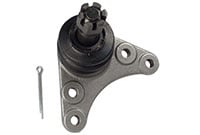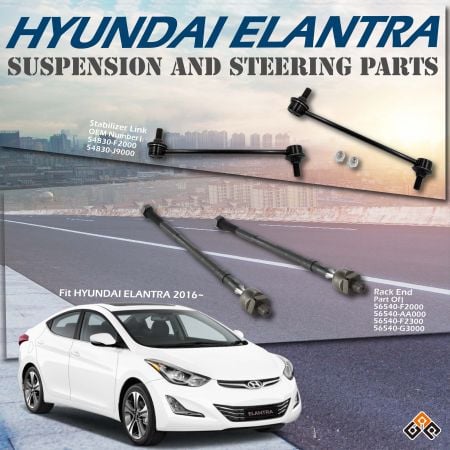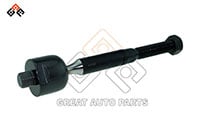A Comprehensive Guide to HS Code for Automotive Parts
What Exactly is an HS Code
An HS Code, short for Harmonized System Code, is a standardized numerical system used globally to classify traded products. Developed by the World Customs Organization (WCO), the HS Code is essential for identifying goods, determining applicable tariffs, and ensuring compliance with international trade regulations. Each HS Code consists of six digits: the first two digits represent the product category, the next two specify the subcategory, and the final two digits define the product itself.
For auto parts, HS Codes are particularly crucial. They ensure that items like bumpers, seat belts, or exhaust pipes are accurately classified, facilitating smooth customs clearance and avoiding potential penalties. Without the correct HS Code, businesses could face delays, fines, or even legal issues, disrupting their operations and increasing costs.
Automotive Parts HS Code
Auto parts generally fall under the HS Code heading 8708. This heading covers parts and accessories of motor vehicles of headings 8701 to 8705. Some specific examples include:
| HS Code | Auto Part |
| 8708.10.30 | Bumpers |
| 8708.10.60 | Parts of bumpers |
| 8708.21.00.00 | Safety seat belts |
| 8708.22.00.00 | Front windscreens (windshields), rear |
| 8708.29.10 | Motor vehicle parts for assembly |
| 8708.91 | Radiators and parts thereof |
| 8708.92 | Silencers (mufflers) and exhaust pipes; parts thereof |
| 8708.93 | Clutches and parts thereof |
| 7318 | Bolt (Ball Stud) |
HS Codes Used for Auto Parts – Import
For imports, the HS codes related to automotive parts include a variety of specific items. For example, screws, bolts, nuts, and similar fasteners fall under HS Code 7318, with a significant volume of 47,895 shipments. Other critical codes include:
| HS Code | Description |
| 7318.15 | Other screws and bolts (Ball Stud), with or without their nuts or washers |
| 3926 | Other articles of plastics |
| 8708 | Parts and accessories of motor vehicles |
| 87082900 | Other parts |
| 8538 | Parts suitable for apparatus of headings 8535, 8536, or 8537 |
HS Codes Used for Auto Parts – Export
When it comes to exports, the scenario shifts slightly. Automotive parts leaving the country often fall under different HS codes compared to imports. For instance, seats and their parts are classified under HS Code 9401, accounting for 20,194 shipments. Other significant export codes include:
| HS Code | Description |
| 4016 | Other articles of vulcanized rubber other than hard rubber |
| 8708.30.00 | Brakes and servo-brakes, parts thereof |
| 87089900 | Other parts and accessories |
These codes are essential for ensuring that auto parts are properly identified, taxed, and regulated as they move across international borders. For a comprehensive list and more detailed information, you can refer to resources like the International Trade Administration(https://www.trade.gov/automotive-parts-tariff-codes) and other trade and tariff databases.
How Do HS Codes Impact the Import and Export of Auto Parts
HS Codes significantly impact the import and export of auto parts in several critical ways:
- Tariff Determination: HS Codes determine the tariffs and duties that apply to imported and exported goods.
- Compliance with Regulations: Proper HS Code classification is essential for complying with international trade regulations.
- Trade Statistics: HS Codes assist in the collection of trade statistics, which governments and organizations use to monitor and analyze trade patterns.
- Facilitation of Trade Agreements: HS Codes are used in trade agreements to specify the goods covered. Correct classification helps implement preferential tariffs and other trade benefits.
- Avoiding Non-Compliance Penalties: Using the correct HS Code helps businesses avoid non-compliance penalties, including fines, delays, and the denial of import privileges.
For a company like Great Auto Parts, accurate HS Code classification is critical to avoid unnecessary delays, fines, and disruptions in our supply chain. By using the correct HS Codes, we not only streamline our operations but also ensure that our products are competitive in the global market.

How Can Businesses Ensure Accurate HS Code Classification of Auto Parts
Accurate HS Code classification is crucial for avoiding costly errors and ensuring smooth international trade operations. Businesses can ensure accuracy by following these steps:
- Consult Official Resources: Use resources like the Harmonized Tariff Schedule (HTS) from the World Customs Organization (WCO) or national customs authorities to find detailed descriptions and guidelines for classifying goods.
- Hire Experts: Employ customs brokers or trade compliance experts who specialize in HS Code classification. Their expertise helps ensure goods are accurately classified and compliant with international regulations.
- Use Classification Tools: Utilize online HS Code lookup tools and databases that allow businesses to input product descriptions and find the corresponding HS Codes.
- Training and Education: Invest in training for staff involved in logistics, supply chain, and trade compliance. Understanding HS Code classification principles helps in making informed decisions and reducing errors.
- Detailed Product Descriptions: Ensure product descriptions are detailed and accurate. Specific descriptions make it easier to classify the product correctly, including material composition, function, and use.
- Regular Audits: Conduct regular audits of HS Code classifications to ensure ongoing accuracy and compliance with any updates in regulations.
- Stay Updated: Keep informed about changes in HS Codes and international trade regulations. Regularly updated classifications help prevent issues during customs clearance.
The Role of Technology in HS Code Classification
For businesses dealing with a wide range of auto parts, technology offers several key advantages:
- Increased Accuracy: Automated classification tools reduce the likelihood of human error, ensuring that every part, from bumpers to exhaust pipes, is correctly classified. This is particularly beneficial for companies with large inventories where manual classification would be time-consuming and prone to mistakes.
- Speed and Efficiency: AI-driven platforms can process and classify products much faster than human operators, allowing businesses to expedite their shipping processes and reduce delays at customs. This speed is especially crucial in industries like automotive, where time-sensitive deliveries are the norm.
- Continuous Learning: Machine learning algorithms used in these platforms can improve over time, learning from past classifications to become even more accurate. This continuous improvement ensures that your HS Code classifications stay up-to-date and compliant with the latest regulations.
- Regulatory Updates: Many advanced classification tools include features that automatically update your classifications as global trade regulations change. This ensures that your business remains compliant without the need for constant manual updates.
What Are the Penalties for Incorrect HS Code Classification in International Trade
Incorrect HS Code classification can have serious consequences for businesses engaged in international trade. Here’s a breakdown of the potential penalties:
- Fines and Penalties: Customs authorities may impose fines for incorrect classification based on the severity of the error and the value of the goods involved. These fines can be substantial, especially if the misclassification is discovered after multiple shipments.
- Delays in Customs Clearance: Misclassification can lead to delays as customs officials may need to re-evaluate the goods, causing disruptions in your supply chain. These delays can result in additional storage costs and missed delivery deadlines, which can have a ripple effect throughout your operations.
- Seizure of Goods: In severe cases, goods that are incorrectly classified may be seized by customs authorities, leading to significant financial losses. This is a worst-case scenario that can be avoided with proper classification and compliance checks.
- Back Payments of Duties: If it’s discovered that your business has been underpaying duties due to incorrect classification, you may be required to pay back the owed amounts. This can include retroactive payments for past shipments, impacting your financial stability.
- Loss of Import/Export Privileges: Repeated misclassification can result in the suspension or revocation of your import/export privileges, severely affecting your ability to operate in international markets. This is a significant risk for businesses that rely heavily on global trade.
- Damage to Reputation: Incorrect classification can damage your company’s reputation with customs authorities and business partners. This can lead to increased scrutiny and more stringent inspections in the future, making your trade operations more challenging.
- Legal Action: In extreme cases, incorrect classification can lead to legal action, including charges for fraud or evasion of duties. This could result in criminal penalties, including fines and imprisonment for responsible parties.
What Are the Recent Changes or Updates in HS Codes for Auto Parts
Staying informed about the latest changes in HS Codes is essential for businesses involved in the import and export of auto parts. In 2024, there have been several key updates:
- New Codes for Parts of Seats: A new HS Code, 9401.99.20, has been introduced for parts of seats used in motor vehicles. This update reflects the growing complexity and diversity of automotive components and ensures that these parts are correctly classified under Chapter 94 of the customs tariff.
- Updates in the Harmonized Tariff Schedule (HTS) (https://www.thompsonhinesmartrade.com/2024/01/u-s-international-trade-commission-releases-2024-harmonized-tariff-schedule-basic-edition/): The U.S. International Trade Commission has released the 2024 Basic Edition of the Harmonized Tariff Schedule of the United States (HTSUS). This edition includes various legal and statistical changes that may affect the classification of auto parts, ensuring that the tariff schedule remains aligned with current trade practices.
- Changes to HTS and Schedule B(https://www.dbschenker.com/usa/changes-to-the-hts-and-schedule-b-starting-january-1-2024-1657626) : The 484(f) Committee has implemented changes to the HTS and Schedule B, effective from January 1, 2024. These updates include revisions to the classification and tariff rates for various goods, including auto parts.
For detailed information on these updates, businesses should refer to the official Harmonized Tariff Schedule and consult with trade compliance experts to ensure they are fully informed and compliant with the latest changes.




